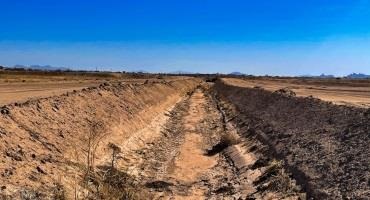For the farmers and ranchers in drought-stricken states in the West and Northern Plains, survival mode is taking many forms. For Utah vegetable farmer Tyson Roberts, it’s planting about 20% fewer acres than he normally would.
“We plant in the spring and well through the summer, into the month of August. We were planting and trying to irrigate the crops we had, and come about the middle of June, we realized we are not going to have enough water to sustain the crops we have growing, and also grow the additional crops that we would be planting through the month of July,” Roberts explained.
He also had to walk away from the portion of his harvested crop he can’t sell.
“Some of the sweet corn crops we flood irrigate, and two-thirds of the top part of the fields are pretty good, and we get good yield, good quality, but the bottom end, we just haven't had enough water to get it to all of those plants. We've lost a lot in yield, and in quality. So, in addition to the ground that we left unplanted, there's also a portion of the harvested crop that is unmarketable.”

In Arizona, the drought is exacerbating an already too-low water allotment situation, according to row crop farmer Nancy Caywood. The family purchased the land that became Caywood Farms, southeast of Phoenix, in the 1930s. At the time of the land purchase, the family had to sign an agreement with the San Carlos Irrigation District saying they would depend only on the district for water; they could never drill a well. Per the agreement, the family pays for two-acre feet of water, whether or not they receive it.
Several years ago, the water allotments started dropping below what the Caywoods needed to grow crops.
“They were not [providing] enough water to support that entire farm, so we had to start fallowing land. Cotton takes about four-acre feet of water to grow, alfalfa take seven-to-nine-acre feet of water, and we'd get a water allotment under a quarter of an acre-foot,” Caywood explained.
So, Caywood tapped into the knowledge provided by her undergraduate and master’s degrees in education and ag education, respectively, to add an agritourism and agriculture education component to the farm, which she said has helped them a lot.
Still, the nearly 100-year-old water allotment agreement needs to be updated for her family and many others in the area. Farmers can’t afford to pay for water they’re not getting.
“What we would like to see happen is that it's detached from our taxes, so we could pay our taxes, and when water is available, pay for that two-acre feet of water. And the second thing that we would like to happen is not to pay for that two-acre feet of water [if it is not delivered]. If we can't receive water, we certainly can't plant and reap a harvest. We don't have the money to keep paying for a product that we don't receive,” Caywood said.
On Bray Ranch in Colorado, persistent dry conditions have prevented third-generation cattle rancher Zandon Bray and his family from growing any hay three out of the past four years.
“You can have a rainy day fund, or a stockpile of hay, which we did have two years ago, but when you're faced with these kind of situations year in and year out, you don't have that opportunity to have those stockpiles available every single year and we're hoping to survive the winter,” Bray said. “Maybe the winter will turn out beneficial for us, the conditions will improve, and we can get our numbers back up for next year.”
Click here to see more...